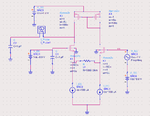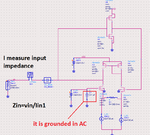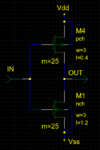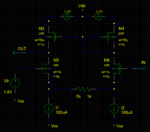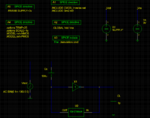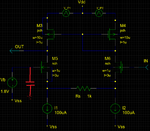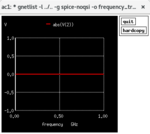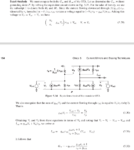Ata_sa16
Full Member level 6

- Joined
- Mar 29, 2016
- Messages
- 343
- Helped
- 59
- Reputation
- 118
- Reaction score
- 58
- Trophy points
- 28
- Location
- Milky Way Galaxy, 179° 56′ 39.4″
- Activity points
- 2,221
You can observe this on figures you have plotted.
Your gm is constant in green line.
I explained it several times. If you want to have constant and linear Gm for you structure you should use source degeneration.

Don't misunderstand me but I suggest you to read CMOS theory before designing these kind of circuits, it will help you a lot.
Your gm is constant in green line.
I explained it several times. If you want to have constant and linear Gm for you structure you should use source degeneration.

Don't misunderstand me but I suggest you to read CMOS theory before designing these kind of circuits, it will help you a lot.


